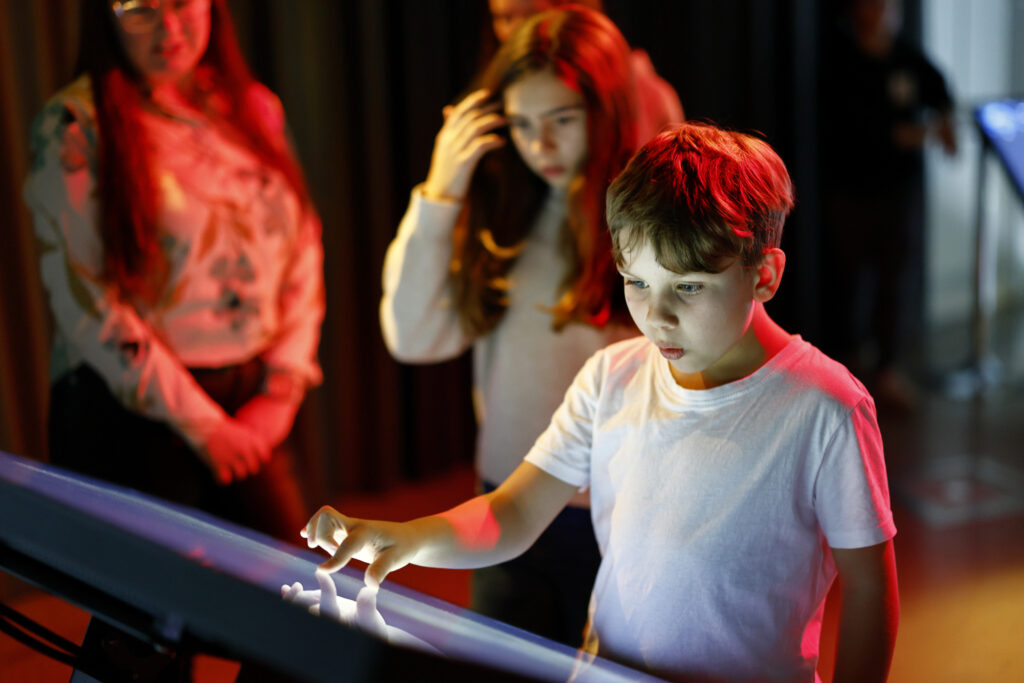How is our understanding of science and technology affected when we experience them through visualizations and immersive environments? These are the kinds of questions that Andreas Göransson, postdoctoral researcher in science and technology education at Linköping University, explores on a daily basis.
“We conduct research at the intersection of visualization, learning, and science and technology. There’s great potential here to spark curiosity and deepen understanding of scientific topics for both students and the general public,” says Göransson.
The research group for Visual Learning and Communication at Visualiseringscenter C and Linköping University—founded by Professor Lena Tibell and now led by Professor Konrad Schönborn—conducts studies in both formal and informal learning environments. This includes everything from preschool and school education to learning that takes place in settings such as science centers and museums.
“One example is a study where we investigated school visits to science centers. By interviewing teachers, students, and staff, we identified key factors that contribute to successful visits. We found that visualizations and hands-on exploration play a significant role in creating engaging and educational experiences,” Göransson explains.
The role of visualization in learning is central to the group’s work. They study how different types of visual representations—from physical models to digital animations—can support learning and spark interest.
A concrete example of how research connects to practical production is the Wisdome film Chemistry of Life, which focuses on the body’s cells and biochemistry.
“That film was created out of Lena Tibell’s long-standing interest in developing groundbreaking dome content in areas previously unexplored—like biology and biochemistry. The production is deeply rooted in her earlier research in learning and science communication,” Göransson says.
Looking ahead, the research group sees major opportunities to further develop integrated research throughout the Wisdome initiative—from the design stage all the way to the user experience.
“We want to build research more deeply into the development process. What do we actually know about how visualizations work? How are understanding, interest, and attitudes affected in students or public audiences who engage with our content? There’s tremendous potential for systematic research that can show real-world impact,” Göransson says.
Another initiative rooted in research is the interactive project TellUs, which uses a visualization globe to create learning experiences about Earth and the environment.
“TellUs is an exciting example where we can study how new technology can advance learning. We’re exploring both its effect on understanding and how it works in practice—for instance, in school settings. AI is also a particularly interesting component—what role will it play in the science communication of the future?”
Working with immersive formats such as dome films, interactive environments, and new methods is something the group sees as highly promising going forward.
“There are signs that immersive formats not only increase engagement but also create experiences that help people absorb the content in a different way. Large-scale studies are needed here, and Wisdome provides a unique opportunity to drive the field forward with data-driven, human-centered approaches. We can travel through time and space—to places we would otherwise never be able to visit. That’s the power we want to explore further: what role does experience play in understanding and learning?” Göransson concludes.

